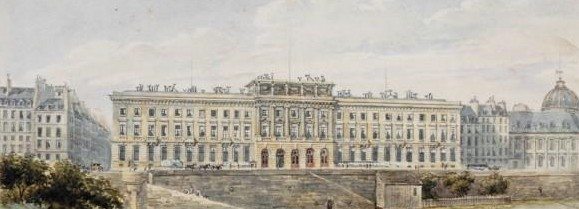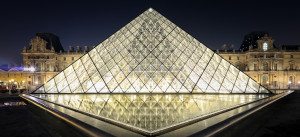Can you appreciate art through a lens?
1 can of sardines, 2 shirts, 8 sweets, 11 posters, 19 Tour Eiffel postcards and a piece of Mica metal. These were the fruits of my visit to the self-explanatory exhibition Take Me (I’m Yours). Showing at the Monnaie de Paris, it does exactly what it says on your designated brown paper bag – the public can literally take anything that takes their fancy.
Chiara Parisi, the director of the 18th century gallery joins curators Christian Boltanski and Hans Ulrich Obrist to revisit the exhibitions success, 20 years after its stint at the Serpentine Gallery. And with an average footfall of 1,000 visitors each day, it’s needless to say that the exhibitions popularity has not dwindled. Take Me (I’m Yours) spurs on a communal scavenger hunt for treasure, meanwhile documenting the exhibitions gradual transformation. It encourages the public to not only interact with the art as a viewer but physically take pieces away, and create their own compositions.
The public can post snaps of their visit online and show, for example how the German artist Hans-Peter Feldmann’s Eiffel Tower postcard covered walls are dismantled over the exhibitions course. Thanks to the internet, public engagement thus becomes a reciprocal interaction between the artist, the art and the wider artistic community.
a success that just goes to show the increasing necessity of public inclusion within the art world
This revamp of the 1,150-year-old institutions usually conservative reputation has led to both an influx of visitors and a renewed interest in their age old coinage practice – a success that just goes to show the increasing necessity of public inclusion within the art world.
Looking back at just 10 years before, my visit to the Louvre offered a stark contrast. From the winding queues to catch even a glimpse of the ticket desk, to the three security guards tailing me, it was by and large a suffocating experience. And nothing seems to have greatly changed.
This year, the Louvre is once again the world’s most frequently visited art museum, and once again sees millions of tourists flocking like sheep to Instagram their ‘moment’ with Mona Lisa. This banality just serves as a reminder that as teasing as Mona Lisa’s smile is, you’re ultimately shut out from any real emotive connection.
as teasing as Mona Lisa’s smile is, you’re ultimately shut out from any real emotive connection
The Monnaie offered me something that I had never encountered in Paris before. I wasn’t viewing pieces of art as an outsider. Gone are the barriers around artworks (no matter how discreet) that we are accustomed to. Our curiosity is no longer intrusive, instead not only welcomed, but encouraged.
And yes, you could argue that the monetary value of art overrides all arguments for ‘public liberty’. The recent (hilarious) debacle where a Taiwenese boy tripped and fell headfirst into a 1m Paolo Porpora painting would lead any institution running for the bubble wrap. Yet, we cannot deny that it becomes truly dismal when the only interaction the public are having with art is through a lens and an Instagram caption.
More Parisian galleries should follow suit of the Monnaie de Paris – the public should be encouraged to really ‘feel’ artworks, rather than superficially ticking them off a bucket list.
This article was written before the Paris attacks, as a French national Helene gives her opinion on the effect of these drastic events.
A tragedy that has shaken our global community can only be condemned as we offer our deepest condolences.
But just as every other country that faces the threat of daily terrorism, war, and infringement of basic human liberties – life goes on. The world has seen Paris come to a standstill. But it has also seen the resilience of Parisians, determined to carry on with their lives as normal rather than live in fear.
In times of such sadness and anger, what must be focused on is the immense solidarity the world has shown for Paris, and hence not only the words but the art created in remembrance.
The world has seen Paris come to a standstill. But it has also seen the resilience of Parisians
Cartoonist Jean Jullien, the creator of the iconic ‘Peace for Paris’ symbol told the Telegraph:
‘It was my most direct reaction. Usually when I draw I make an image that will make people laugh, or communicate. But this time I felt like communicating something that made me and everybody very upset. It was just my way of sharing my reaction, of sharing a need for peace and solidarity in the face of such a disaster.”
Whether it is Paris, Beirut, Baghdad or every other country overcast by violence – let hope and peace prevail. Let us appreciate the freedom to live and create.


Comments (1)